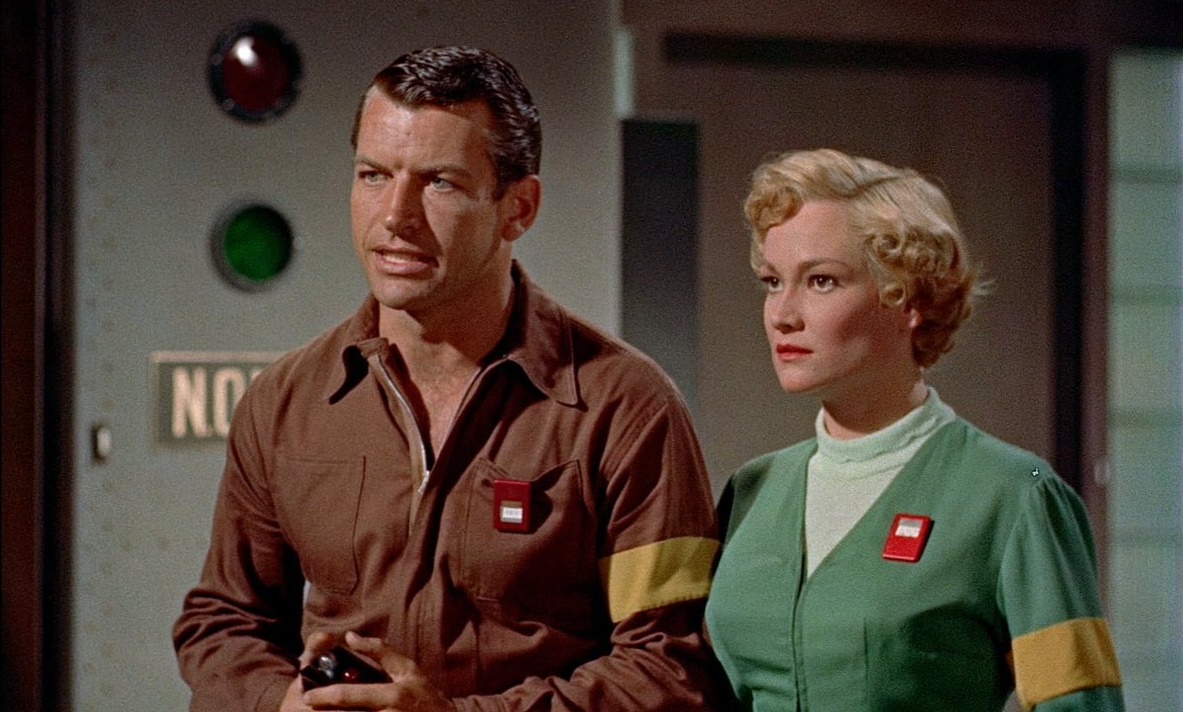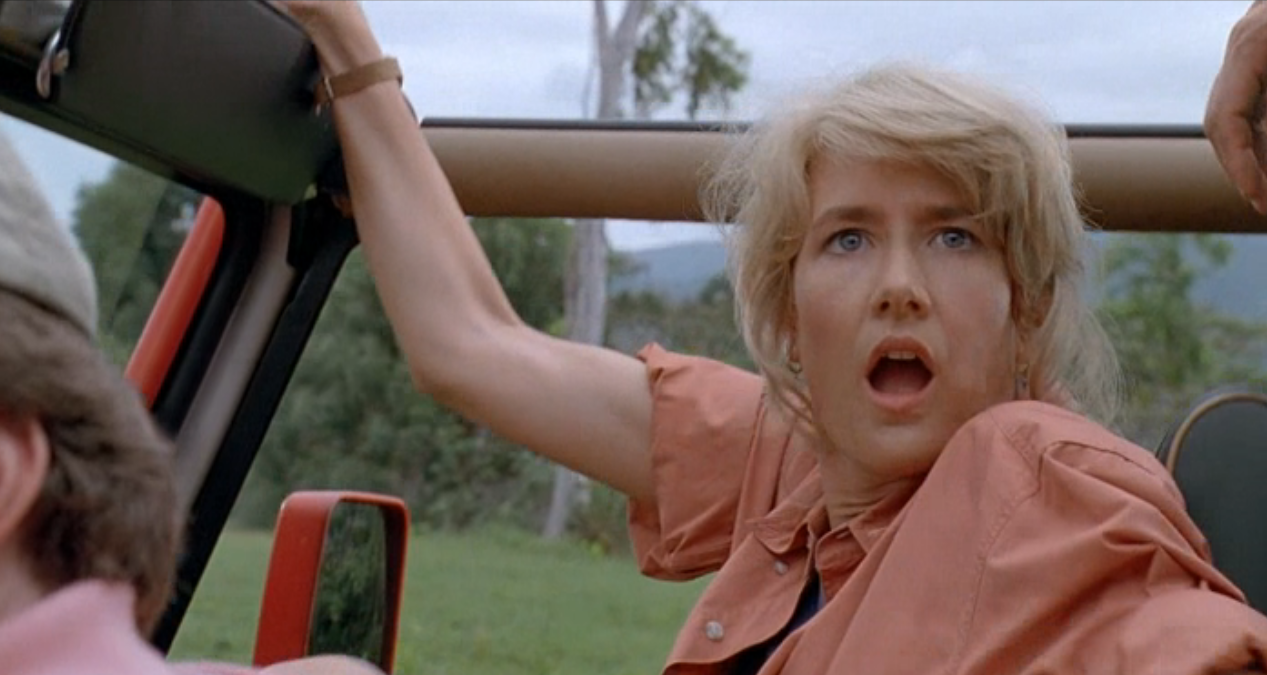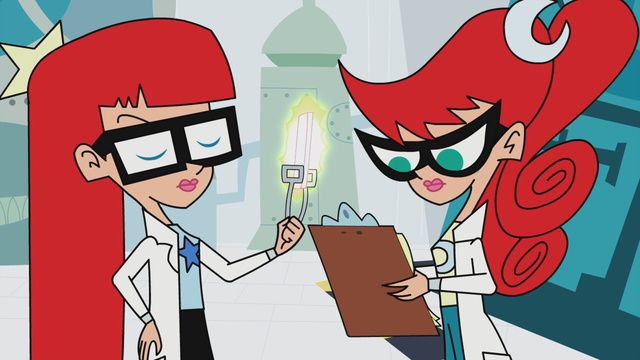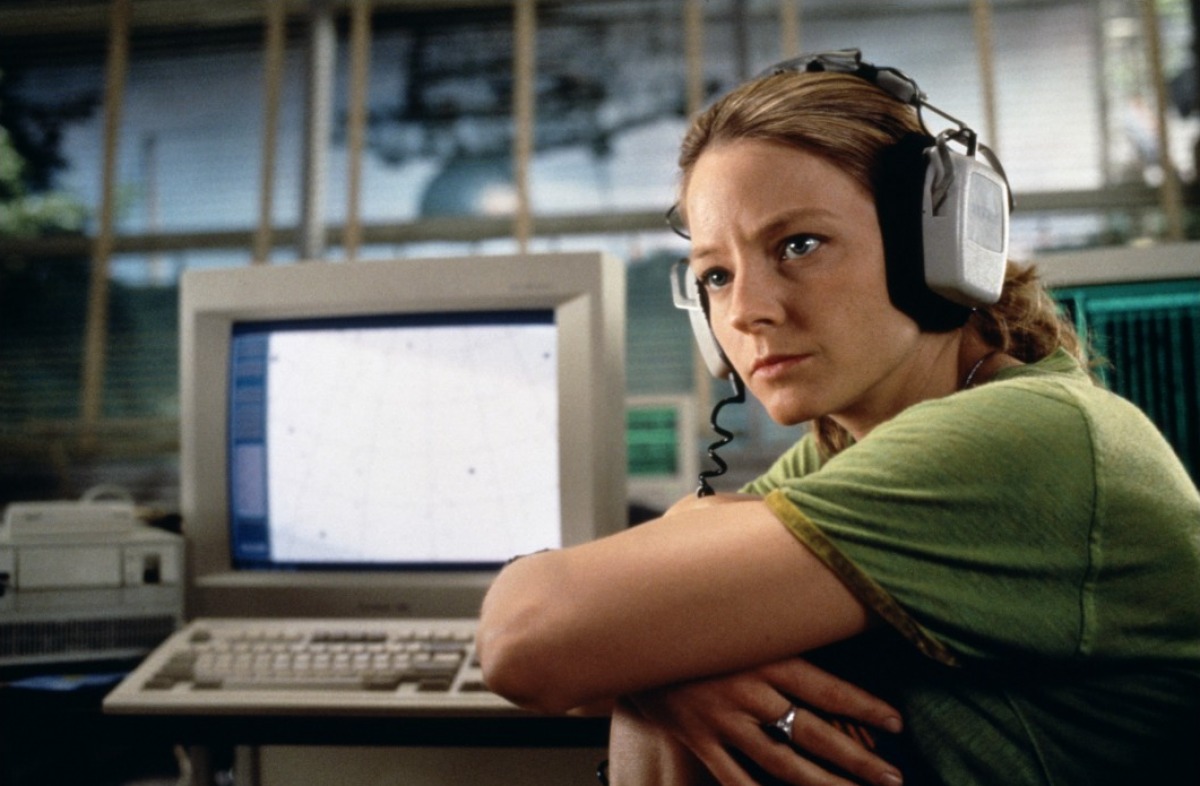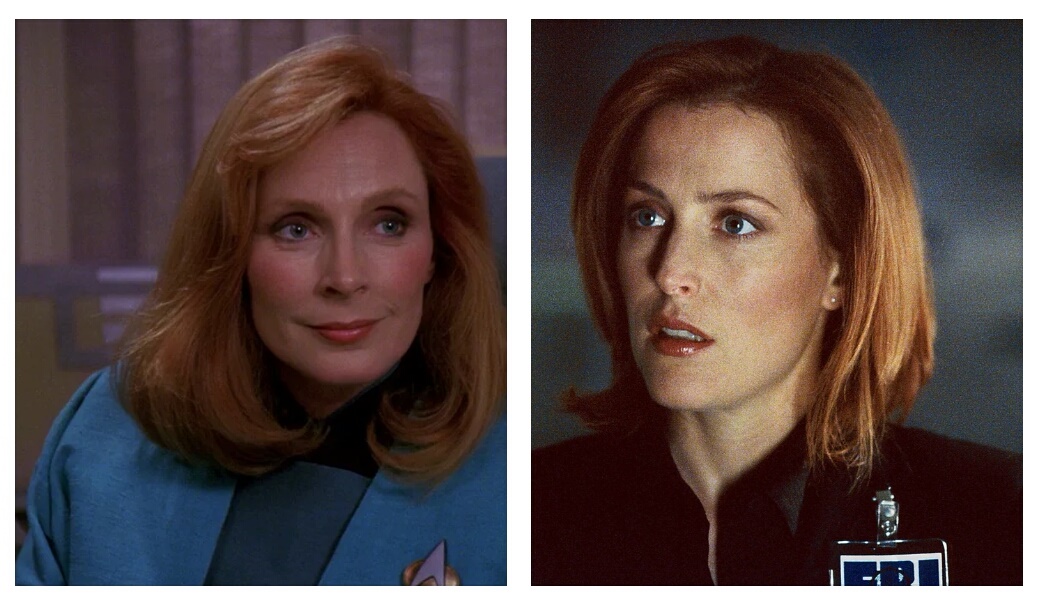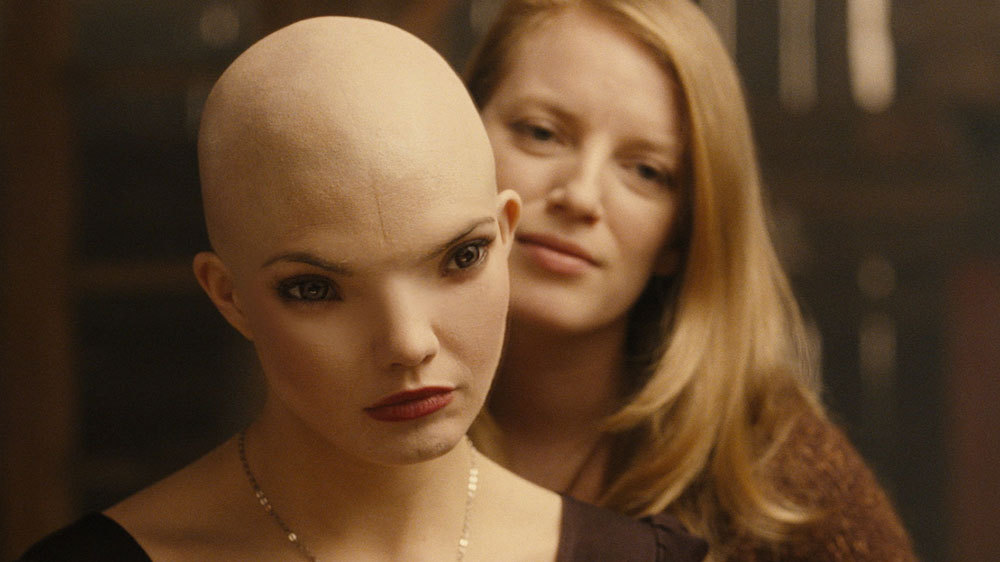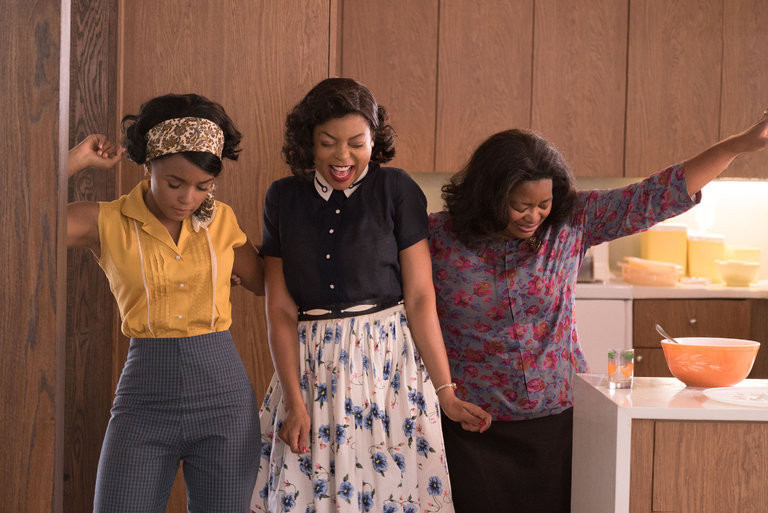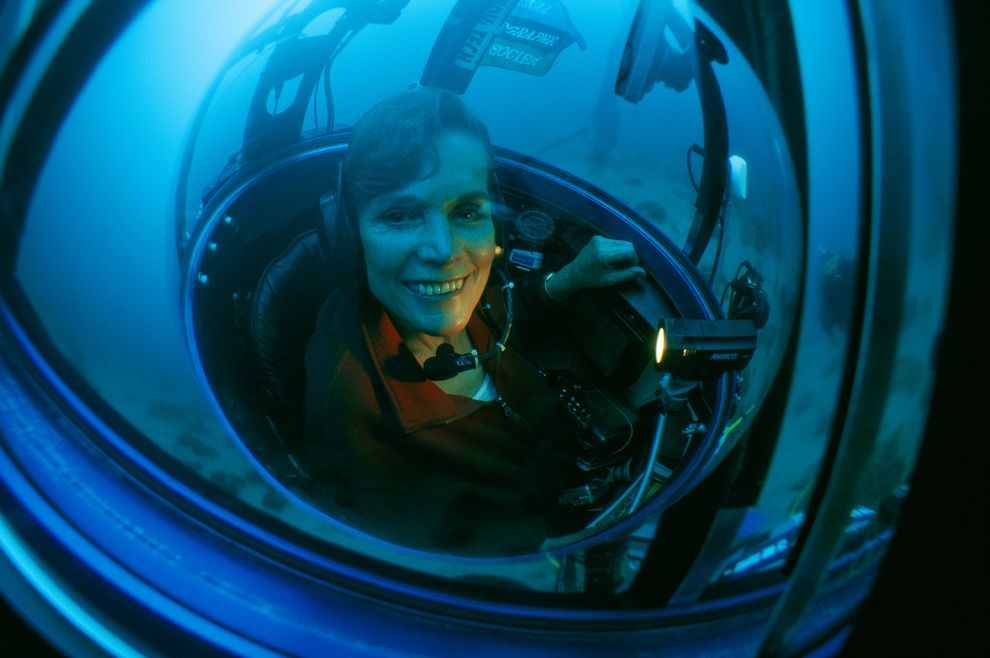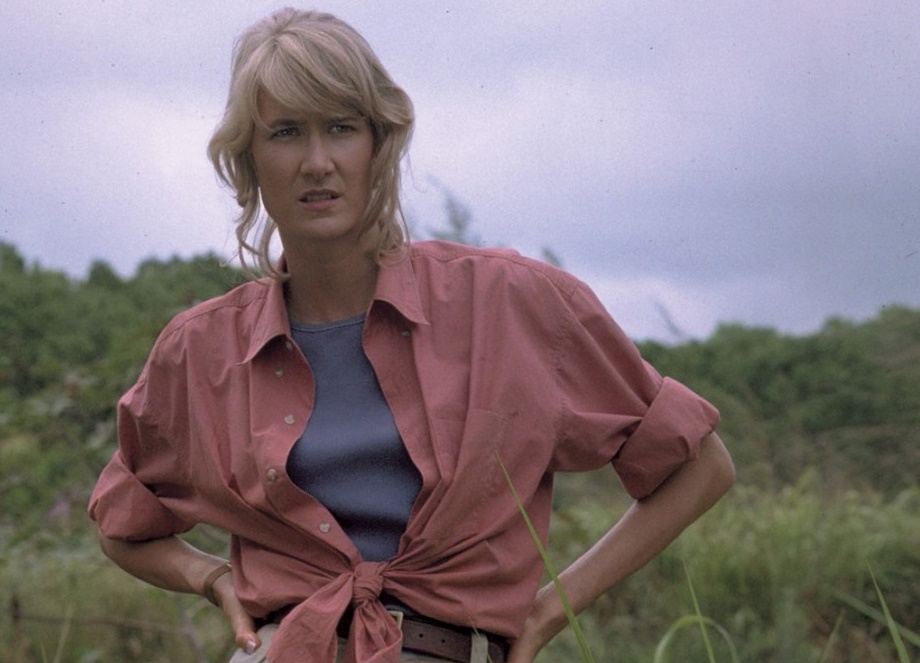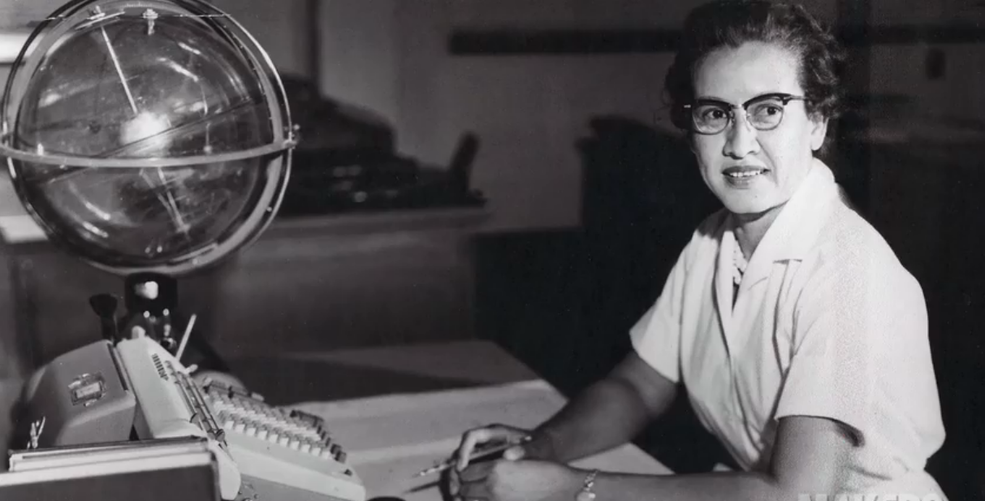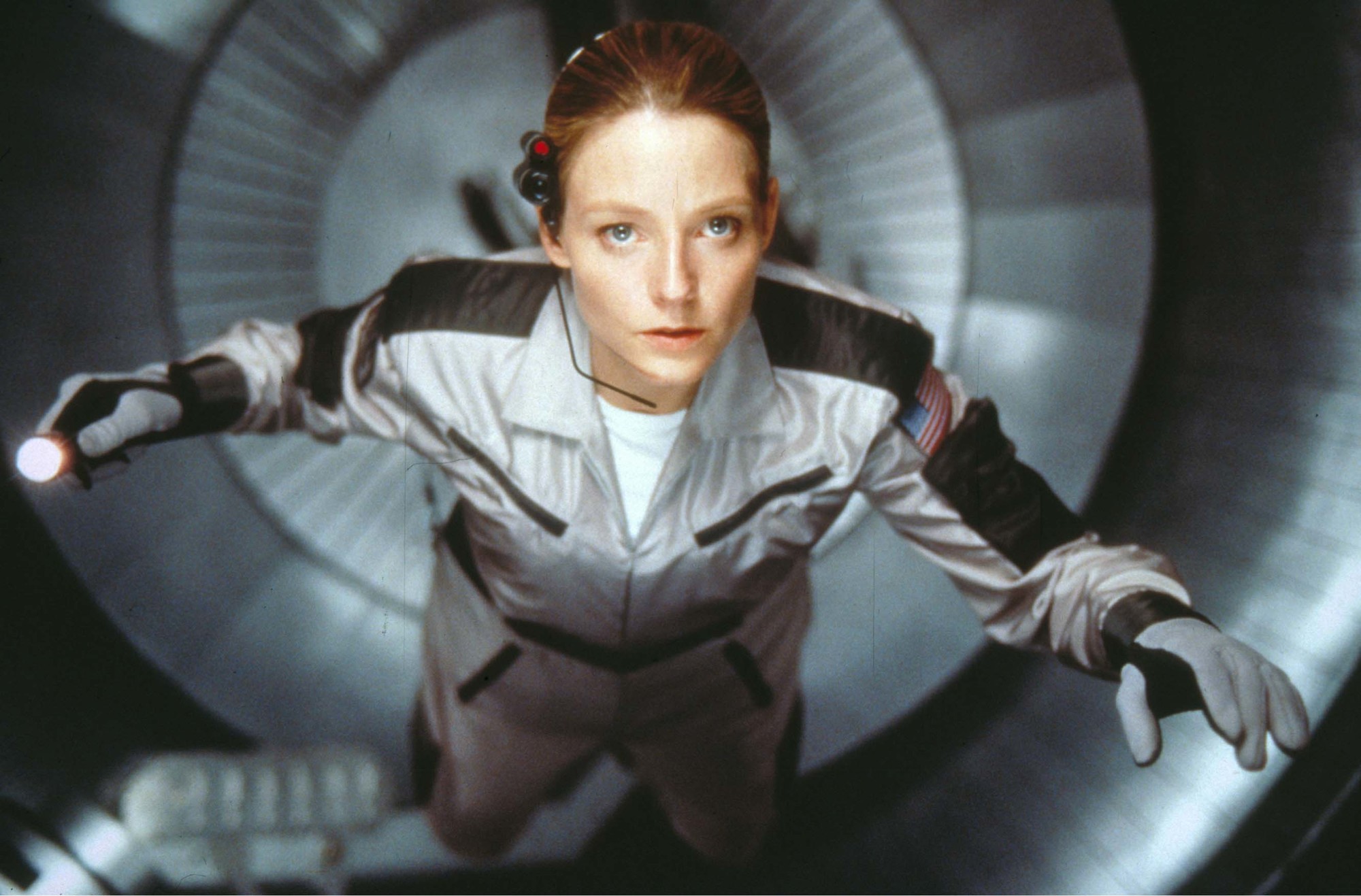This guest post written by Lee Jutton appears as part of our theme week on Women Scientists.
The character of the Bond girl is nearly as iconic as that of James Bond himself. After all, one of MI6 Agent 007’s defining features — and indeed, one of his biggest weaknesses, one that his enemies exploit time and time again — is his love of the opposite sex. Over the course of 24 films spanning 54 years, Bond has met his match — whether it be intellectually, sexually or a combination of both — in numerous women. While some seem to exist only as a pretty face and body for the audience to ogle as Bond utters some his infamous double entendres, many others stand on their own as vibrant, complicated characters. These are women with their own inner lives, their own professions, their own reasons for being beyond just being eye candy. However, that doesn’t mean they aren’t still conventionally attractive; the more modern version of the Bond girl often has brains, but you better bet she still has beauty, too.
The World Is Not Enough is a perfectly acceptable James Bond adventure directed by Michael Apted and starring Pierce Brosnan as 007. Story-wise, it doesn’t reach the heights of From Russia With Love or GoldenEye. But it’s an exciting, action-packed romp featuring a great Bond girl performance by Sophie Marceau as Elektra King, the daughter of an oil tycoon who is not what she seems. The film’s other female lead is a nuclear scientist with the unfortunate moniker of Dr. Christmas Jones, played by a 28-year-old Denise Richards. Previous Bond girls have included fellow agents (both allies and enemies), assassins, thieves, and heiresses (like Elektra King), not to mention the occasional pilot or fortune-teller; adding a nuclear scientist to their ranks could be viewed as a step forward into a more feminist future for the franchise. When asked about the role, Richards told BBC News that she felt the “brainy and athletic” Dr. Jones had more substance than Bond Girls of the past:
“The female roles now have a lot more depth – it’s more than just running around on Bond’s arm. Christmas is strong, intelligent and sassy and there’s an infectious one-upmanship and clever banter between her and James Bond.”
Unfortunately, not many people agreed with her. Upon The World is Not Enough’s release in 1999, a sizeable portion of the criticism was leveled at Dr. Jones — much of it bemoaning the curve-hugging wardrobe she sported throughout the film and insisting that Richards just wasn’t believable as a nuclear scientist. Richards ended up being the recipient of the Bond franchise’s first-ever Razzie Award, while a 2006 Entertainment Weekly list of the 10 worst Bond girls ranked her #1: “Let’s review: Denise Richards played Dr. Christmas Jones, a nuclear physicist who wore a tank top and hot pants. Bloody hell, even Q didn’t have a gadget to help Bond escape from that disaster.” Yet such skin-deep criticism of this character is unfair, and barely skims the surface as to why Dr. Jones went from being a promising step forward for Bond girls to one of the more maligned female characters of the franchise.
Dr. Jones is introduced about halfway through The World is Not Enough, when she emerges from a protective jumpsuit at a Russian intercontinental ballistic missile base in the middle of the Kazakhstan desert. Bond is posing as a Russian nuclear scientist to figure out what notorious terrorist Renard (Robert Carlyle) is doing at the base when he is introduced to Dr. Jones, an American nuclear physicist who has been recruited by the International Decommissioning Agency to help reduce Russia’s stockpile of nuclear weapons by dismantling its nuclear warheads. A tough job, to be sure, and Dr. Jones’ frosty reception of Bond at the base immediately establishes her as someone who has had to be very tough to get where she is in life. Despite being the head of the project, she is clearly not used to being taken seriously, and so overcompensates by being extra imperious towards the men around her to ensure that they keep in line. As Bond ogles her long, tanned limbs as she emerges from her jumpsuit clad in, yes, a tank top and shorts, his guide describes her as the base’s bit of “glimmer” and glumly notes, “Not interested in men. Take my word for it.” Naturally, Dr. Jones overhears, and immediately assumes that Bond’s intentions towards her are along the same lines:
Dr. Jones: Are you here for a reason, or are you just hoping for a glimmer?
Bond: Mikhail Arkov, Russian atomic energy department. And you are, miss?
Dr. Jones: Doctor Jones. Christmas Jones, and don’t tell me any jokes, I’ve heard them all.
Bond, innocently: I don’t know any doctor jokes.
It’s ironic that the character of a beautiful young scientist who is bitter about being dismissed by the men around her as just a bit of “glimmer” was then just as easily dismissed as such by audiences. One can argue that Dr. Jones’ costume caters to the male gaze and that yes, she might have been taken more seriously if she had worn a less-revealing wardrobe, rather than one reminiscent of another sexy scientist: archaeologist Lara Croft in Tomb Raider. Yet the notion that beautiful women should have to diminish their appearances in order to be taken seriously — especially when working in a traditionally male-dominated field — is just as outdated as anything in the Bond films of the 1960s. In 2006, Casino Royale addressed this issue in regards to Bond girl Vesper Lynd (Eva Green), an accountant from HM Treasury with a brusque manner of speech and a stylish but severe black suit that she wears like a suit of armor. Lynd is smart, tough and, because she’s a Bond girl, also incredibly beautiful. After a conversation about the art of reading one’s opponents during poker, Lynd then asks Bond to read her:
Lynd: What else can you surmise, Mr. Bond?
Bond: About you, Miss Lynd? Well, your beauty’s a problem. You worry you won’t be taken seriously.
Lynd: Which one can say of any attractive woman with half a brain.
Bond: True. But this one overcompensates by wearing slightly masculine clothing. Being more aggressive than her female colleagues. Which gives her a somewhat prickly demeanor, and ironically enough, makes it less likely for her to be accepted and promoted by her male superiors, who mistake her insecurities for arrogance.
Bond could also have been talking about Dr. Jones, who shares Lynd’s “prickly demeanor” and is viewed as arrogant by the men around her, who can’t believe that she isn’t interested in them. But, she never got the memo about the wardrobe, and one wonders that if Dr. Jones just bothered to put on a pair of slacks, perception of the character would have been different. Indeed, once one is able to suspend any disbelief that they might have over a nuclear scientist being capable of looking good in short-shorts, one realizes that Dr. Jones isn’t a terrible character — like many Bond girls from the series’ earlier era, she’s just a mediocre one.
Soon after Bond and Dr. Jones are introduced, they team up to track down Renard, who has run off with a stolen bomb. When they find the bomb hidden in an oil pipeline, they rocket in on an inspection car so that Dr. Jones can dismantle it, only to find out that half of the device’s plutonium is missing. Even though she doesn’t exactly enjoy spending substantial amounts of time running around with a man who only “speaks spy,” Dr. Jones is determined to help Bond track down the plutonium, noting, “The world’s greatest terrorist running around with six kilos of weapons-grade plutonium can’t be good. I gotta get it back, or someone’s gonna have my ass.” Bond, ever the gentleman, responds, “First things first.”
Now, Richards’ performance is not one that will go down in the history books as a landmark of great acting. But, it doesn’t deserve to be remembered as one of the worst, either. She does her best with the dialogue that is given to her — some of which is, as Richards mentioned when discussing the role, surprisingly sassy and snarky, reflecting her dismissive attitude towards Bond’s heavy-handed, uber-masculine tactics. The problem is, screenwriters Neal Purvis and Robert Wade just don’t give her enough, and when they do, it is too often bland statements of the obvious. It’s not that she isn’t believable as a nuclear scientist; it’s that after awhile, we just forget that she is one. Dr. Jones wastes more breath bluntly stating what is happening than she does explaining why; she’s the smartest person in the room for most of the movie, but is rarely given the chance to show it. I refer to this phenomenon as the Legolas Effect, named for the handsome elf archer played by Orlando Bloom in the Lord of the Rings trilogy. Legolas rarely shows the wisdom of elves, and instead periodically utters pointless lines like “A diversion!” to remind the audience that he’s more than just a pretty piece of scenery placed in the background of Aragorn’s epic speeches. The same goes for Dr. Jones, who at one point screams, “It’s flooding!” while tons of water gushes into the submarine where she and Bond are waging war with Renard. Moments like this demolish any credibility that Dr. Jones built up while dismantling nuclear bombs and just make her look silly.
Speaking of silly: The World is Not Enough culminates in the stereotypical closing-credits sex scene with Bond that is chock full of the terrible Christmas jokes that Dr. Jones was so firmly against when she was introduced earlier in the movie, including what is the most cringeworthy closing line in the entire franchise: “I thought Christmas only comes once a year.” And this is what is the most disappointing thing about Dr. Jones. She’s a tough-talking woman whose best moments in the film come when she grows impatient with Bond’s testosterone-driven idiocy and counters his quips with her own formidable sarcasm, yet in the end, she’s just like any of those earlier Bond girls that Richards dismissed as lacking depth: she helplessly collapses into the arms of Bond and allows him to turn her into a punchline after all.
Watching The World is Not Enough seventeen years later, one can’t help but feel that both Dr. Jones and the woman who portrayed her were treated somewhat harshly. The role is unfortunately underwritten, and Richards’ performance in the film pales in comparison to that of the fiery Marceau (to see the two women side by side is to automatically see Richards in a less complimentary light), but to only describe the character’s failings in terms of her appearance says more about the audience than it does about the character. At this point, it should go without saying that scientists come in all shapes, sizes, colors and genders. Instead, our perceptions and prejudices have colored our negative impressions of Dr. Jones. While she isn’t one of the best Bond girls, she doesn’t deserve all of the worst-ever criticism that have been bestowed upon her — nor does Richards deserve the majority of the blame for why the character just doesn’t quite work.
Lee Jutton has directed short films starring a killer toaster, a killer Christmas tree, and a not-killer leopard. She previously reviewed new DVD and theatrical releases as a staff writer for Just Press Play. You can follow her on Medium for more film reviews and on Twitter for an excessive amount of opinions on German soccer.



